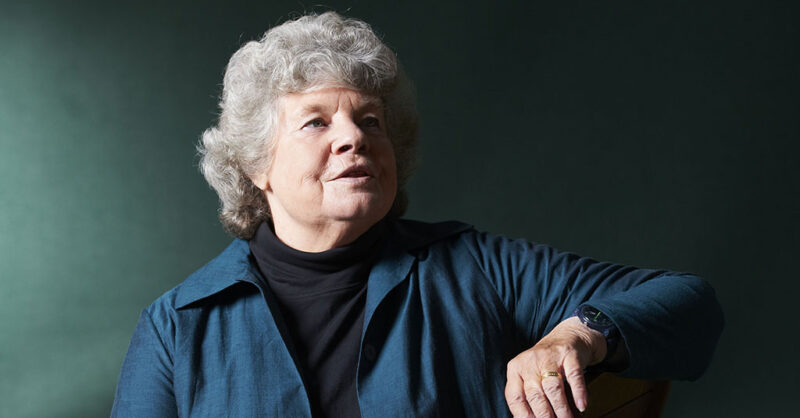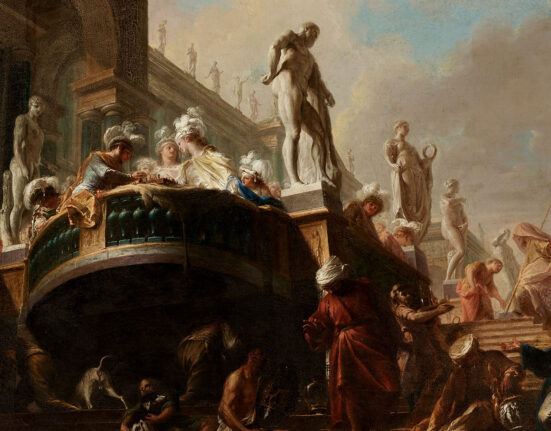
I turned up at A S Byatt’s Putney home just before lunchtime. I was due to interview her; a journalist doesn’t expect any particular hospitality in these circumstances. Perhaps I hoped for a cup of tea. But Byatt, a warm and serious presence, insisted I take a glass of Champagne. “Champagne is good for you,” she said – advice I’ve lived by ever since.
In 2008, when I was Literary Editor of The Times, we published a list of the 50 greatest British writers since 1945. Byatt, who died on 16 November aged 87, came in at number 34, between Anita Brookner and Ian McEwan. Such a list would look very different now, but I stand by her inclusion in that august company and few, I think, would argue. Her work was distinguished by a remarkable combination of deep seriousness and a real playfulness which found its first full flowering in her bestselling, Booker Prize-winning 1990 novel Possession, a “romance”, as she called it, which nested two narratives and two time periods together to build a love affair and a mystery, all at once – shot through with her own simulacrum of Victorian poetry, a delight in itself.
It was Possession, which I read at an impressionable age, that made me determined to be a novelist. She was amused when, decades later, I told her that it also made me fear I wouldn’t succeed, because I didn’t know the names of trees. Her brilliance in writing about the natural world was unsurpassed, and in 2014 a coleopterist named a species of iridescent beetle in her honour (Euhylaeogena byattae Hespenheide), inspired by her portrayal of naturalists in the novella “Morpho Eugenia”, which appeared in her 1992 collection Angels and Insects. Byatt turned her immeasurably wide-ranging mind to so many worlds in the course of her career. She retold the great Norse myth of Ragnarok – she was always fascinated by folklore – as part of the Canongate Myths series in 2011; The Matisse Stories (1993) and a joint essay/biography, Peacock & Vine: On William Morris and Mariano Fortuny (2016) were expressions of her fascination with visual and material art. The Biographer’s Tale (2000) is a novel that considers the lives of Carl Linnaeus, Francis Galton and Henrik Ibsen; her last major novel, The Children’s Book (2009) is loosely based on the life of the author E Nesbit. She loved digging deeply into the world.
Born in Sheffield in 1936, she was the older sister of the novelist Margaret Drabble, who found fame first, with her 1963 novel A Summer Bird Cage; Byatt’s debut, The Shadow of the Sun, would not be published until the following year. Over time the two became estranged from each other – though that is not so uncommon, even in un-literary families. Her life, however, was marked by a singular tragedy, the death of her only son Charles, killed by a drunk driver when he was 11. She had one daughter from her first marriage to Ian Byatt, and two more daughters from her marriage to Peter Duffy; I recall her telling me once how cross it made her when people wrote that she had three children. “I have four children,” she said. “Only one of them is dead.” She called a spade a spade, even in the worst sorrow; she was a bracing presence.
The richness of her work and the seriousness of her intellectual endeavour made Byatt more a part of a European tradition than a British one. Her work sometimes seemed too tricky to British critics, but she was never daunted. It was particularly pleasing to her, however, to be awarded the Erasmus Prize in 2016, given annually by the Praemium Erasmianum Foundation in the Netherlands “to a person or institution that has made an exceptional contribution to the humanities or the arts, in Europe and beyond”. There was a glaring irony in the fact that later the same year the United Kingdom voted to leave the European Union.
I will miss A S Byatt. It has been a while since I have re-read Possession. I shall pour myself a glass of Champagne and begin that beautiful journey again in its author’s honour.







